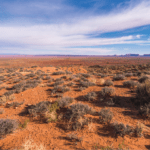 On April 18, 2024, the Bureau of Land Management finalized the Conservation and Landscape Health Rule, a long-awaited rule more commonly referred to as the Public Lands Rule. The purpose of this rule is to advance the BLM’s stewardship mission by focusing on the health and resilience of ecosystems across public lands managed for multiple use and sustained yield. The Public Lands Rule implements the existing “multiple use and sustained yield” statutory framework adopted by Congress in the Federal Lands Policy and Management Act of 1976 (FLPMA).
On April 18, 2024, the Bureau of Land Management finalized the Conservation and Landscape Health Rule, a long-awaited rule more commonly referred to as the Public Lands Rule. The purpose of this rule is to advance the BLM’s stewardship mission by focusing on the health and resilience of ecosystems across public lands managed for multiple use and sustained yield. The Public Lands Rule implements the existing “multiple use and sustained yield” statutory framework adopted by Congress in the Federal Lands Policy and Management Act of 1976 (FLPMA).
The new rule updates BLM planning and management regulations to “conform to the changing needs and conditions on public lands” and to achieve the right “combination of balanced and diverse resources uses that takes into account the long-term needs of future generations for renewable and non-renewable resources.” 43 U.S.C. § 1702(c)(defining multiple use). The Public Lands Rule addresses ecological degradation of public lands, which threatens the ability of BLM to achieve the goals of FLPMA, and it focuses on resilience, that is, the ability of ecosystems to recover from the threats of disturbances and environmental change.
The Wallace Stegner Center’s Law & Policy program partnered with the Getches-Wilkinson Center at University of Colorado Boulder to produce a white paper explaining the rule and its legal foundation: a Legal Analysis of the Public Lands Rule. The white paper provides detailed information on the Public Lands Rule, including: (1) summaries of the policy tools and initiatives included in the rule; (2) the legal foundation for the rule with a focus on multiple use and sustained yield mandate in FLPMA; and (3) a discussion of the conditions on BLM land that warrant the management approaches embodied in the rule.
Read the final rule. You can also read the white paper here.
 Jamie Pleune is an associate professor of law (research) and a member of the Law and Policy Group in the Wallace Stegner Center.
Jamie Pleune is an associate professor of law (research) and a member of the Law and Policy Group in the Wallace Stegner Center.
